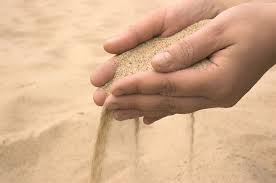TESTING FOR SILT CONTENT IN SAND
Sand is a crucial construction material that is commonly used in various building projects such as roads, bridges, and buildings. However, the quality of sand used in construction projects can vary, and it is essential to test sand for its silt content to ensure that it meets the required standards. Silt is a granular material that is finer than sand but coarser than clay. If sand has a high silt content, it can affect the quality of the construction project by reducing the strength and durability of the structure. In this article, we will discuss how to test for silt content in sand.
Step 1: Collect a sample of sand The first step in testing for silt content in sand is to collect a sample of the sand. It is essential to collect a representative sample of the sand to ensure accurate results. To collect a sample, take a random scoop of sand from different areas of the site and mix it thoroughly in a container. Take a subsample from this mixed sample for testing.
Step 2: Prepare the sample Once you have collected the sample, it is important to prepare it for testing. To do this, dry the sample by spreading it out on a flat surface and leaving it to dry for at least 24 hours. After the sand has dried, remove any visible debris or organic material from the sample.
Step 3: Weigh the sample After the sample has been prepared, weigh it using a balance. Record the weight of the sample as “W1”.
Step 4: Sieve the sand To test for silt content, the sand sample needs to be sieved through a series of sieves with decreasing mesh sizes. The sieves are stacked on top of each other with the coarsest mesh at the top and the finest mesh at the bottom. The sand sample is placed on the top sieve and shaken for a few minutes until all the sand has passed through the sieves.
Step 5: Weigh the silt After sieving, the silt retained on each sieve is collected and weighed. Record the weight of the silt as “W2”.
Step 6: Calculate the silt content The silt content in sand can be calculated using the following formula:
Silt Content (%) = (W2/W1) x 100
Where W2 is the weight of silt retained on the sieves, and W1 is the weight of the original sand sample.
Step 7: Interpret the results The silt content in sand should be within the acceptable range as specified by the standards for construction materials. For example, the Indian Standard (IS) code specifies that the silt content in sand should not exceed 8% for fine aggregate used in concrete. If the silt content is higher than the acceptable limit, the sand may not be suitable for construction, and further testing or treatment may be required.
In conclusion, testing for silt content in sand is essential to ensure that the sand meets the required standards for construction materials. By following the steps outlined above, it is possible to obtain accurate results and interpret them correctly. Remember that the silt content in sand should be within the acceptable range, and if it is higher than the limit, further testing or treatment may be necessary.


